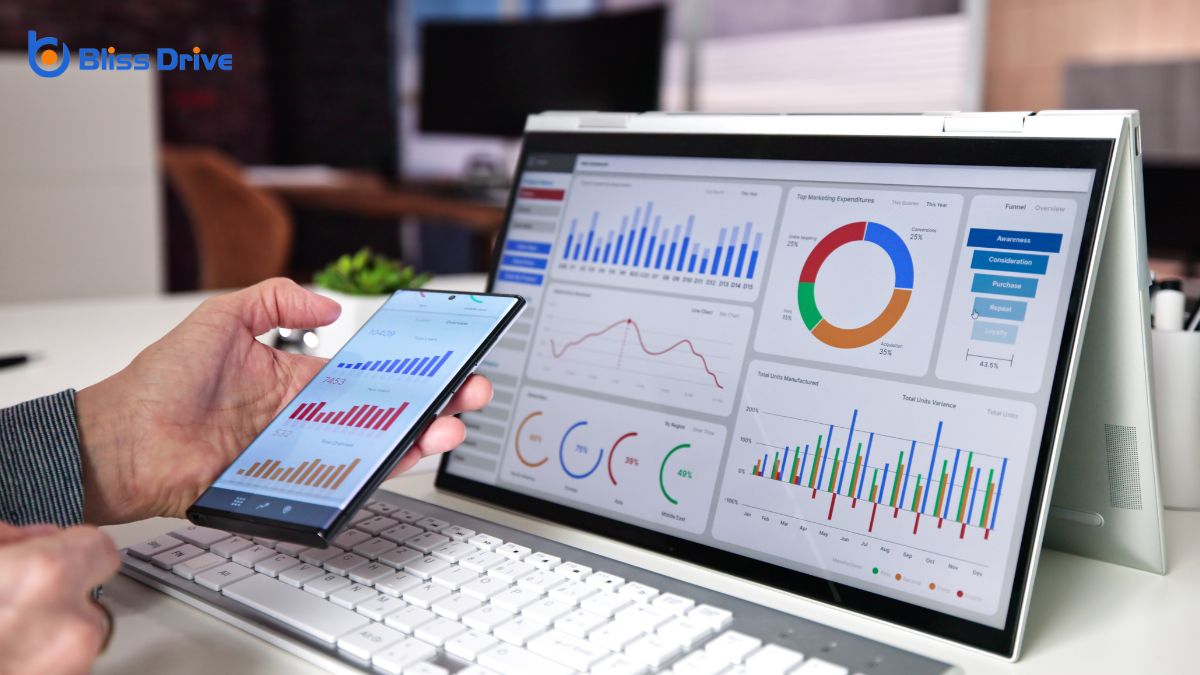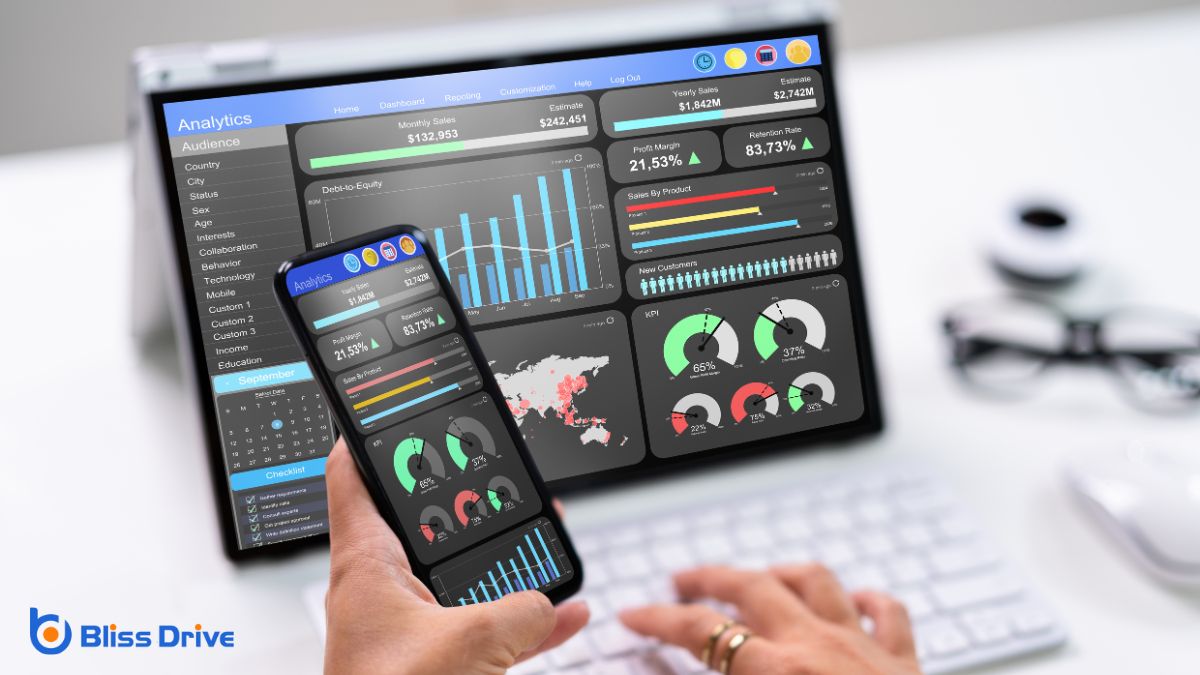Learn More About Us

To monitor mobile traffic using Google AnalyticsA web analytics service offered by Google that tracks and reports website traffic., log into your account and set up a new property specifically for mobile. Install the Google AnalyticsThe systematic computational analysis of data or statistics to gain insights and support decision-ma... SDK for apps or update your tracking code for mobile websites. Focus on metrics like sessions, bounce rateThe percentage of visitors who leave a website after viewing only one page., and conversions. Customize mobile-specific segments and reports to understand user behavior and traffic sources better. Regular analysis helps enhance your mobile strategy, and exploring further will provide greater insights.

To effectively monitor mobile traffic, you'll need to set up Google Analytics specifically for mobile tracking.
Start by logging into your Google Analytics account. Next, create a new property under your existing account, specifying that it’s for a mobile app or a website with significant mobile traffic.
Install the Google Analytics SDK for mobile apps or update the tracking code on your mobile site. This guarantees data collection is accurate and tailored to mobile interactions.
Customize your dashboardA user interface that organizes and presents information in an easy-to-read format, typically showin... to focus on mobile-specific dimensions and filters. Use segments to differentiate mobile users from desktop users.
Finally, regularly review your mobile traffic data. By setting it up correctly, you’ll gain valuable insights into how mobile users engage with your content.
Now that you've set up Google Analytics for mobile tracking, it's important to understand the key metrics that will illuminate your mobile traffic's behavior.
These metrics will help you make informed decisions to optimize your mobile user experience and drive better engagementThe interactions that users have with a brand’s content on social media.. Here are four essential metrics to evaluate:
Understanding these metrics will provide insights into your mobile audience's interaction patterns.
With Google Analytics, you can easily access mobile-specific reports to enhance your understanding of mobile traffic.
By examining the Mobile Device Breakdown, you'll uncover which devices your users prefer, allowing for optimized content delivery.
Additionally, analyzing User Behavior Insights will help you tailor experiences that keep mobile users engaged and satisfied.
Understanding the mobile device breakdown is essential because it helps you tailor your content and marketing strategies to better suit your audience's preferences. Google Analytics provides detailed reports that show which devices your visitors use, enabling you to optimize user experience.
Here's how you can make the most out of this data:
These insights empower you to deliver a seamless experience to your mobile audience.
Having explored the mobile device breakdown, it's time to focus on understanding user behavior through mobile-specific reports in Google Analytics.
You'll want to immerse yourself in the Mobile Overview report, which provides insights into how users interact with your site on their devices. Look for patterns in bounce rates and session durations to identify areas for improvement.
Next, check out the Mobile App AnalyticsTracking and analyzing the performance and user behavior within a mobile application. if you have an app. It helps track user engagementThe level of interaction and involvement users have with social media content., app version usage, and in-app purchases. Use the Acquisition report to see where your mobile users are coming from and tailor your marketing strategies accordingly.
Lastly, don't miss the Mobile Performance report. It highlights slow-loading pages on mobile devices, giving you a chance to optimize and enhance user experience.
As mobile devices become ubiquitous, analyzing user behavior on these platforms is essential for businesses aiming to optimize their digital presence.
Google Analytics offers powerful tools to understand how users interact with your mobile site or app. By delving into user behavior, you can identify patterns and preferences, helping you enhance the user experience.
Here are some key actions to take:
These insights empower you to make data-driven decisions.
Tracking mobile conversion rates is essential for gauging the effectiveness of your mobile marketingThe practice of promoting products or services via mobile devices, such as smartphones and tablets. efforts.
You'll want to set up goals in Google Analytics to monitor how well your mobile site or app turns visitors into customers. Start by identifying key actions like purchases, sign-ups, or downloads. Once you've defined these goals, head to Google Analytics and configure them to track conversions specifically on mobile devices.
Use the Conversions section to view detailed reports, helping you pinpoint areas needing improvement. Pay attention to metrics like conversion rate and abandonment rate.
These insights let you refine your strategies, ensuring that your mobile platform effectively drives desired actions. Regularly analyzing this data empowers you to make informed decisions and enhance your mobile marketing success.
You can use Google Analytics to easily identify which mobile devices and operating systems your visitors prefer.
By breaking down device types, you'll see if your audience leans more toward smartphones or tablets.
Keep an eye on operating system trends to guarantee your site performs smoothly across the most popular platforms.
Understanding the device type breakdown is essential for gaining insights into how users interact with your website via mobile devices.
By identifying the top mobile devices and operating systems, you can tailor your website experience to meet the needs of your audience. Here’s how you can do it effectively:
While keeping an eye on the latest trends, it’s crucial to understand the operating systems your audience prefers when accessing your site. By using Google Analytics, you can easily identify the top mobile devices and operating systems your visitors use.
Head to the "Audience" section, then "Mobile," and finally "Devices." Here, you'll see detailed reports on the popularity of operating systems like iOS and Android among your users.
This insight helps you optimize your website for the most common platforms, guaranteeing a seamless user experience. If you see a significant portion of your traffic coming from Android devices, for example, you might want to prioritize testing on Android browsers.
Being aware of these trends guarantees your site remains accessible and efficient for your mobile audience.
When evaluating the performance of your mobile traffic, identifying the sources that drive visitors to your site is essential. Google Analytics can help you track these sources effectively.
By understanding where your mobile audience originates, you can better tailor your marketing strategies and improve user engagement. Here's how you can monitor mobile traffic sources:
After identifying where your mobile audience comes from, it's equally important to focus on how quickly your site loads on their devices.
Use Google Analytics to evaluate your mobile page speedThe time it takes for a webpage to load, affecting user experience and conversion rates. by maneuvering to the “Behavior” section, then selecting “Site Speed.” Here, you'll find essential data on how long your pages take to load on mobile devices. This info helps you pinpoint slow-loading pages that might frustrate users.
Improve your site's performance by addressing these issues. Consider optimizing images, leveraging browser caching, and minimizing JavaScript.
Remember, a fast-loading site enhances user experience and boosts engagement. Regularly monitoring and improving your mobile page speed guarantees your audience stays happy and engaged, potentially increasing conversions.
Keep an eye on these metrics to maintain an efficient mobile presence.
To gain more meaningful insights into your mobile audience, customize your segments in Google Analytics. This lets you analyze specific behaviors and trends, helping you make informed decisions.
Here's how you can get started:
Customizing segments empowers you to refine strategies tailored to your mobile audience's unique habits.

Although many businesses focus on desktop analytics, leveraging Google Analytics goals for mobile optimizationDesigning and formatting web content to ensure it performs well on mobile devices. can dramatically enhance your mobile strategy. Set specific goals like tracking app downloads, mobile sign-ups, or form completions to gain insights into user behavior. By doing so, you'll identify what elements need improvement and which ones are performing well.
Create goals that align with your business objectives. For example, if users abandon your mobile checkout process, set a goal to track those exits. This data helps you pinpoint friction points. Adjust your site or app accordingly to boost conversions and enhance user experience.
Regularly review these goals to verify they still align with your evolving strategy. By doing this, you'll continually refine your mobile offerings and stay ahead in a competitive market.
By effectively setting up Google Analytics for mobile tracking, you're equipped to plunge into key metrics and utilize mobile-specific reports. Analyze user behavior and conversion rates to understand your audience better. Keep an eye on traffic sources and page load speeds to guarantee peak performance. Customize segments for deeper insights and leverage goals for mobile optimization. With these strategies, you'll gain a thorough understanding of your mobile traffic, helping you make informed decisions for growth.
